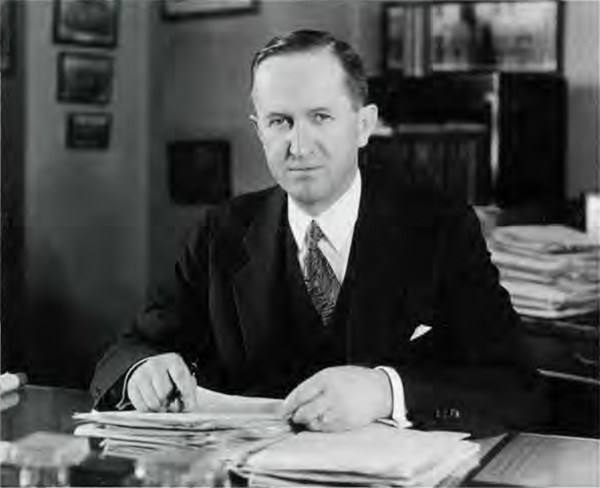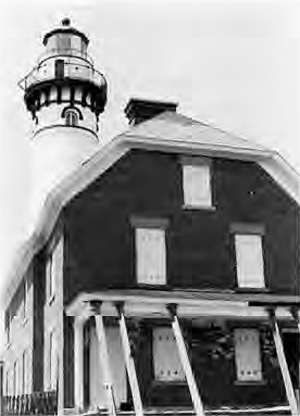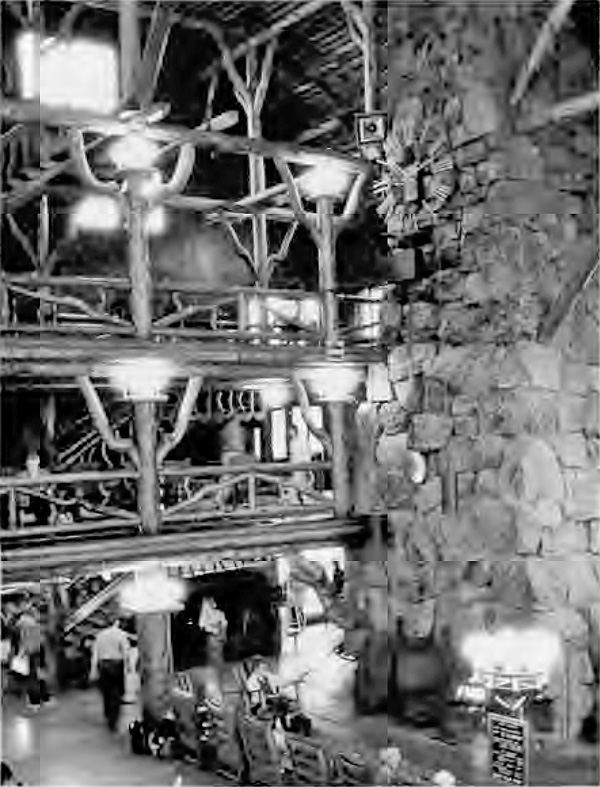
CELEBRATING THE NATIONAL PARK SERVICE CENTENNIAL • 1916-2016

Bryce Canyon National Park
|
The National Park Service and Cultural Resources
Barry Mackintosh Most Department of the Interior bureaus and offices have some concern for cultural resources. But this concern is integral to the basic purpose of only one: the National Park Service. In the 1916 law creating it, the NPS was charged by Congress "to conserve the scenery and the natural and historic objects and the wild life [emphasis added]" in the places entrusted to it and to provide for their enjoyment "in such manner and by such means as will leave them unimpaired for the enjoyment of future generations." Notwithstanding this mandate in its organic act, the NPS saw cultural resource management as a distinctly minor responsibility in its early years. Only one of the 14 national parks and seven of the 21 national monuments it inherited in 1916 had been set aside for their cultural resources, most of which were prehistoric archeological remains. Compared to the great natural parks like Yellowstone and Yosemite—the "crown jewels" of the national park system— these areas were generally smaller, less spectacular, and less likely to attract the public use and support eagerly sought by the fledgling bureau. The first NPS management policy statement, a 1918 letter from Secretary of the Interior Franklin K. Lane to Director Stephen T Mather, completely ignored cultural resources in its prescriptions for park preservation, development, and use and for park system expansion.
The author of this letter, Assistant Director Horace M. Albright, nevertheless had a personal interest in American history and soon perceived historic preservation as a major growth opportunity for the Park Service and system. The great natural parks were concentrated in the West, far from the major eastern population centers with their heavy representation in Congress. To substantially increase its public and political suppott and protect itself from being swallowed up by its larger and better-established rival bureau, the Agriculture Department's Forest Service, the NPS needed to broaden and diversify its domain. The East, lacking spectacular scenery already in federal ownership, presented few opportunities for new natural parks. What it had in abundance were sites, monuments, and memorials commemorating the nation's past. Beginning in 1890, Congress had charged the War Department with acquiring and preserving some of America's most important battlefields. Under the 1906 Antiquities Act, presidents proclaimed as national monuments several historic forts and other features on military reservations, as well as significant natural and cultural features in national forests. Albright coveted these battlefield parks and national monuments that remained under War and Agriculture department jurisdictions. After succeeding Mather as director in 1929 he supported legislation to transfer the War Department's areas—nearly all in the East— to the NPS. The transfer bill stalled, but in 1930 and 1933 Albright got Congress to establish three new historical parks in Virginia and New Jersey under NPS administration: George Washington Birthplace National Monument, where the War Department had erected and maintained a stone shaft; Colonial National Monument, including Yorktown Battlefield; and Morristown National Historical Park, site of Continental Army encampments during the Revolution. Having launched his bureau into military history, Albright was well positioned in April 1933 to lobby the newly inaugurated President Franklin D. Roosevelt for the War Department's parks. A recent law authorizing the president to reorganize the executive branch enabled Roosevelt to give the NPS not only the War Department's areas, but the national monuments held by the Forest Service and the National Capital Parks, previously managed by a separate office. Forty-four of the 52 areas transferred that August were predominantly historical or cultural. Such areas would henceforth compose a majority of NPS holdings; of the 378 present park system units, 224 are predominantly cultural. Thanks largely to cultural resources, what had initially been a western park service and system became truly national. The Service's involvement with cultural resources before the 1930s stemmed largely from the Antiquities Act. All its archeological and historical national monuments had resulted from presidential proclamations under that act. The act also outlawed disturbance and removal of cultural features on federal lands without permission from the responsible government department. Interior and the NPS initially relied on the Smithsonian Institution for archeological expertise, but in 1921 Jesse L. Nusbaum, a professional archeologist, became superintendent of Mesa Verde National Park. In 1927 Secretary Hubert Work ordered all Interior bureaus to consult Nusbaum on Antiquities Act permit requests and other archeological matters. Thus began the Departmental Consulting Archeologist position, held ever since by the senior NPS archeologist (see McManamon and Browning article, p. 19). The influx of historic sites in the early 1930s required the NPS to employ historians, historical architects, and museum professionals to research, interpret, and care for their structures and objects. President Roosevelt's receptivity to Depression relief programs prompted one of the architects, Charles E. Petersen, to propose hiring unemployed architects, photographers, and draftsmen to record significant examples of American architecture. The Historic American Buildings Survey, an NPS program launched in 1933 and still functioning in partnership with the American Institute of Architects and the Library of Congress, extends far beyond park boundaries. The NPS began a companion program for historic engineering works, the Historic American Engineering Record, in 1969.
To provide firmer legal authority for the Service's greatly expanded historic preservation activities, Congress enacted the Historic Sites Act in 1935. The Act declared "a national policy to preserve for public use historic sites, buildings and objects of national significance for the inspiration and benefit of the people of the United States." It authorized the NPS to obtain and preserve records of historical and archeological properties; conduct research on them; make a survey to determine national significance; acquire and operate historic properties and contract with others for their preservation and operation; "restore, reconstruct, rehabilitate, preserve, and maintain" nationally significant properties and establish associated museums; place markers at nationally significant properties; and develop an educational program to inform the public about them. The survey to identify nationally significant properties was seen as a tool for expanding the national park system with areas representing more aspects of American history. Its findings were at first kept confidential to avoid alarming property owners, but it became clear that there were many more nationally significant properties than the NPS could ever acquire. To make them known and encourage their preservation by others, the NPS began referring eligible properties to the Secretary of the Interior for designation as national historic landmarks in 1960. Landmarks whose owners agree to preserve them receive bronze plaques. Secretaries have so far designated some 2,300 landmarks, which are owned by federal, state, and local governments as well as private parties.
In the decades after World War II, national energies previously subdued by the Depression and diverted by the war effort were unleashed on the American landscape. Dams and other river and harbor improvements, urban renewal projects, airports, interstate highways, and other federal undertakings inundated, damaged, and destroyed archeological sites, old buildings and neighborhoods, and other cultural properties. Congress appropriated funds to and through the NPS for archeological survey and salvage work in areas to be affected by dams and other river projects. There was also growing sentiment that cultural resources needed to be identified and considered in project planning. Congress responded with the National Historic Preservation Act of 1966. The Act charged the Secretary of the Interior—in practice, the NPS—with expanding and maintaining a National Register of Historic Places. In addition to the nationally significant historical parks and landmarks managed and identified by the NPS, the National Register was to include properties of state and local significance selected and nominated by state historic preservation officers. A 1971 executive order and 1980 amendments to the Act directed federal agencies to identify and nominate all qualified properties under their jurisdictions. For the NPS, this included properties in predominantly natural and recreational parks. The Act's key protective provision, Section 106, requires federal agencies to consider the effects of their planned undertakings on properties in or eligible for the Register and to allow the Advisory Council on Historic Preservation to comment on them. (Congress created the Advisory Council in the Act under NPS ausarticle-pices but made it an independent agency in 1976.) The Act also authorized federal grants for state historical surveys and plans and for preservation work on Register properties. The 1971 executive order and 1980 amendments encouraged federal agencies to protect and make appropriate use of their Register properties. And federal tax laws beginning in 1976 provided incentives for the commercial rehabilitation of Register buildings. Charged with overseeing and ensuring the legal and professional adequacy of these various activities, the NPS has developed and issued a substantial body of preservation standards, guidelines, and technical information for use by state and local governments, other federal agencies, and private parties engaged in identifying, evaluating, registering, documenting, and treating historic properties. Notable among them are The Secretary of the Interior's Standards and Guidelines for Archeology and Historic Preservation (1983) and The Secretary of the Interior's Standards and Guidelines for Federal Agency Historic Preservation Programs Pursuant to the National Historic Preservation Act (1998). Museum objects, not being "places," are ineligible for the National Register unless they are relatively large and stationary or integral components of Register sites or structures. Museum objects and collections nevertheless constitute a cultural resource category of major responsibility for the NPS. Many archeological and historic properties came to the NPS with associated collections, like the tools and furnishings at Grant- Kohrs Ranch National Historic Site in Montana. At other parks the NPS later acquired furnishings for historic structures and objects for museum displays, such as the Fuller firearms collection at Chickamauga and Chattanooga National Military Park in Georgia. With more than 36 million cultural objects and natural history specimens and more than 35 million archival and manuscript items, the NPS now has one of the largest and most valuable federal museum collections. It includes such treasures as a tent used by George Washington during the Revolution, flags that flew over Fort Sumter at the opening of the Civil War, and the papers of Thomas A. Edison. In addition to caring for this vast and varied array, its curators, conservators, and other museum professionals play important roles in the curatorial activities of Interior and its other bureaus and have made their expertise widely available beyond the Department. In 1936-38, for example, they developed the Interior Department Museum in the Department's new headquarters building. And in recent years they have published the Conserve O Gram series containing technical information on collection preservation for both park and outside museum managers. Ethnographic resources are yet another cultural resource category. All other types of cultural resources—archeological and historic sites, structures, objects, districts, landscapes—may be ethnographic resources, as may intrinsically natural resources. What makes them ethnographic is their special meaning or significance to particular contemporary groups traditionally associated with them. Devils Tower National Monument, for example, is a noted geologic feature but also an ethnographic resource because of its prominence in the origin accounts of Northern Plains Indians. The Atlanta neighborhood occupied by Martin Luther King, Jr., National Historic Site has special significance to the African Americans whose families have lived there for several generations. Employing ethnographers, the NPS has lately made a concerted effort to identify its many ethnographic resources and manage them with sensitivity to their traditional cultural associations. Most people still associate the NPS primarily with the great natural parks—Yellowstone, Yosemite, Glacier, Grand Canyon, and the like. But there is now much greater awareness that these places also contain important cultural resources, some of national significance in their own right. Outstanding examples of early park architecture and landscape architecture, like Old Faithful Inn at Yellowstone, the Ahwahnee Hotel at Yosemite, Lake McDonald Lodge at Glacier, and Grand Canyon Village at Grand Canyon, have been designated national historic landmarks and are preserved and interpreted accordingly. Cultural resources in parks established primarily for their recreational values, like Cape Hatteras Lighthouse at Cape Hatteras National Seashore and Fort Hancock at Gateway National Recreation Area, have received similar recognition and attention. The Blue Ridge Parkway, begun by the NPS as a Depression relief project, today is considered one of the nation's preeminent designed cultural landscapes. Initially seen by the NPS as confined to a few of its secondary attractions, cultural resources are now valued as significant components of nearly all national park system areas and are the focus of the Service's most extensive activities beyond the parks. NPS historians could once provoke natural resource professionals and managers with the notion that Yellowstone National Park in toto—the world's first area so designated— is a cultural resource, worthy of national historic landmark status. Few today would disagree. At the time of this publication, Barry Mackintosh
was the NPS Bureau Historian in Washington, DC.
|
|||||||



